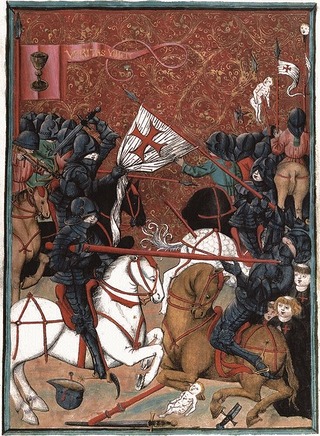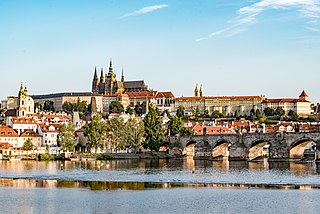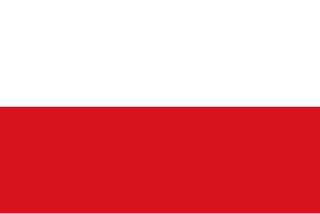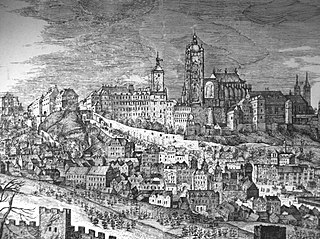Geology of the Czech Republic
| | This section is empty. You can help by adding to it. (July 2010) |
The list should also contain various important Czech topics that are not yet covered.
The list is divided into categories, ordered alphabetically (initially inspired by List of United Kingdom-related topics). Make new categories, rename or update them. Place the entries that don't fit or deserve its own category into the 'Miscellaneous' at the bottom of the list.
| | This section is empty. You can help by adding to it. (July 2010) |

Bohemia is the westernmost and largest historical region of the Czech Republic. Bohemia can also refer to a wider area consisting of the historical Lands of the Bohemian Crown ruled by the Bohemian kings, including Moravia and Czech Silesia, in which case the smaller region is referred to as Bohemia proper as a means of distinction.

The Czech Republic, also known as Czechia, is a landlocked country in Central Europe. Historically known as Bohemia, it is bordered by Austria to the south, Germany to the west, Poland to the northeast, and Slovakia to the southeast. The Czech Republic has a hilly landscape that covers an area of 78,871 square kilometers (30,452 sq mi) with a mostly temperate continental and oceanic climate. The capital and largest city is Prague; other major cities and urban areas include Brno, Ostrava, Plzeň and Liberec.

The Hussites were a Czech proto-Protestant Christian movement that followed the teachings of reformer Jan Hus, who became the best known representative of the Bohemian Reformation.

The Defenestrations of Prague were three incidents in the history of Bohemia in which people were defenestrated. Though already existing in Middle French, the word defenestrate is believed to have first been used in English in reference to the episodes in Prague in 1618 when the disgruntled Protestant estates threw two royal governors and their secretary out of a window of the Hradčany Castle and wrote an extensive apologia explaining their action. In the Middle Ages and early modern times, defenestration was not uncommon—the act carried elements of lynching and mob violence in the form of murder committed together.

Czech literature can refer to literature written in Czech, in the Czech Republic, or by Czech people.

The history of the Czech lands – an area roughly corresponding to the present-day Czech Republic – starts approximately 800,000 years BCE. A simple chopper from that age was discovered at the Red Hill archeological site in Brno. Many different primitive cultures left their traces throughout the Stone Age, which lasted approximately until 2000 BCE. The most widely known culture present in the Czech lands during the pre-historical era is the Únětice Culture, leaving traces for about five centuries from the end of the Stone Age to the start of the Bronze Age. Celts – who came during the 5th century BCE – are the first people known by name. One of the Celtic tribes were the Boii (plural), who gave the Czech lands their first name Boiohaemum – Latin for the Land of Boii. Before the beginning of the Common Era the Celts were mostly pushed out by Germanic tribes. The most notable of those tribes were the Marcomanni and traces of their wars with the Roman Empire were left in south Moravia.

The Czechs, or the Czech people, are a West Slavic ethnic group and a nation native to the Czech Republic in Central Europe, who share a common ancestry, culture, history, and the Czech language.

The Czech lands or the Bohemian lands is a historical-geographical term that, in a historical context, refers the three historical regions of Bohemia, Moravia, and Czech Silesia together before Czechoslovakia and later the Czech Republic were formed. Together the three have formed the Czech part of Czechoslovakia since 1918 and the Czech Republic since 1 January 1993.

Prague Castle is a castle complex in Prague 1 within Prague, Czech Republic, built in the 9th century. It is the official office of the President of the Czech Republic. The castle was a seat of power for kings of Bohemia, Holy Roman emperors, and presidents of Czechoslovakia. The Bohemian Crown Jewels are kept within a hidden room inside it.

Wenceslas Square is one of the main city squares and the centre of the business and cultural communities in the New Town of Prague, Czech Republic. Many historical events occurred there, and it is a traditional setting for demonstrations, celebrations, and other public gatherings. It is also the place with the busiest pedestrian traffic in the whole country. The square is named after Saint Wenceslas, the patron saint of Bohemia. It is part of the historic centre of Prague, a World Heritage Site.
Czech nobility consists of the noble families from historical Czech lands, especially in their narrow sense, i.e. nobility of Bohemia proper, Moravia and Austrian Silesia – whether these families originated from those countries or moved into them through the centuries. These are connected with the history of Great Moravia, Duchy of Bohemia, later Kingdom of Bohemia, Margraviate of Moravia, the Duchies of Silesia and the Crown of Bohemia, the constitutional predecessor state of the modern-day Czech Republic.

The Lands of the Bohemian Crown were the states in Central Europe during the medieval and early modern periods with feudal obligations to the Bohemian kings. The crown lands primarily consisted of the Kingdom of Bohemia, an electorate of the Holy Roman Empire according to the Golden Bull of 1356, the Margraviate of Moravia, the Duchies of Silesia, and the two Lusatias, known as the Margraviate of Upper Lusatia and the Margraviate of Lower Lusatia, as well as other territories throughout its history. This agglomeration of states nominally under the rule of the Bohemian kings was referred to simply as Bohemia. They are now sometimes referred to in scholarship as the Czech lands, a direct translation of the Czech abbreviated name.

The Kingdom of Bohemia, sometimes referenced in English literature as the Czech Kingdom, was a medieval and early modern monarchy in Central Europe. It was the predecessor of the modern Czech Republic.

Největší Čech is the Czech spin-off of the BBC Greatest Britons show; a television poll of the populace to name the greatest Czech in history. The series was broadcast by the national public-service broadcaster, Czech Television. The presenter of the programme was Marek Eben, who was also nominated to be in the Top 100; however, since he was presenting the show he was not eligible to be included in the final list.

The Czechoslovakia men's national ice hockey team was the national ice hockey team of Czechoslovakia, and competed from 1920 until 1992. The successor to the Bohemia national ice hockey team, which was a European power prior to World War I, the Czechoslovak national team first appeared at the 1920 Summer Olympics, two years after the creation of the state. In the 1940s, they established themselves as the best team in Europe, becoming the first team from the continent to win two World Championships. After the arrival of the Soviet Union on the international hockey scene in the 1950s, the Czechoslovaks regularly fought Sweden and Canada for silver and bronze medals, and sometimes beat the Soviets. In total, they won the gold medal six times.

The history of Prague covers more than a thousand years, during which time the city grew from the Vyšehrad Castle to the capital of a modern European state, the Czech Republic.

The national symbols of the Czech Republic are flags, heraldry, cultural expressions and other symbols that represent the Czech Republic, Czech people and their history, culture and nationhood. There are six official symbols which are declared in the Constitution of the Czech Republic. However many other historical, cultural and geographical symbols of the Czech republic and Czech people do exist.

The National Bank of Czechoslovakia was the central bank of Czechoslovakia between 1926 and 1939, succeeding the Austro-Hungarian Bank after a 6-year interval during which central banking functions were assumed directly by the country’s ministry of finance.